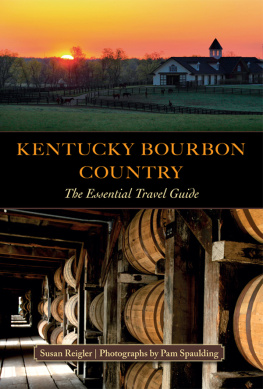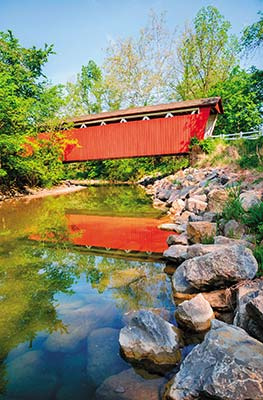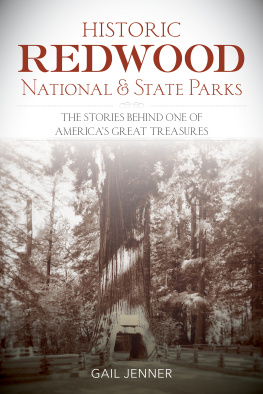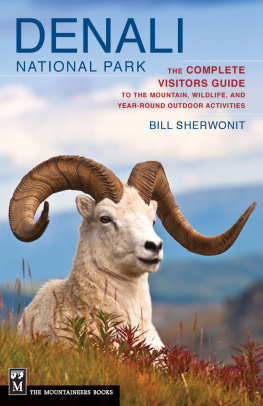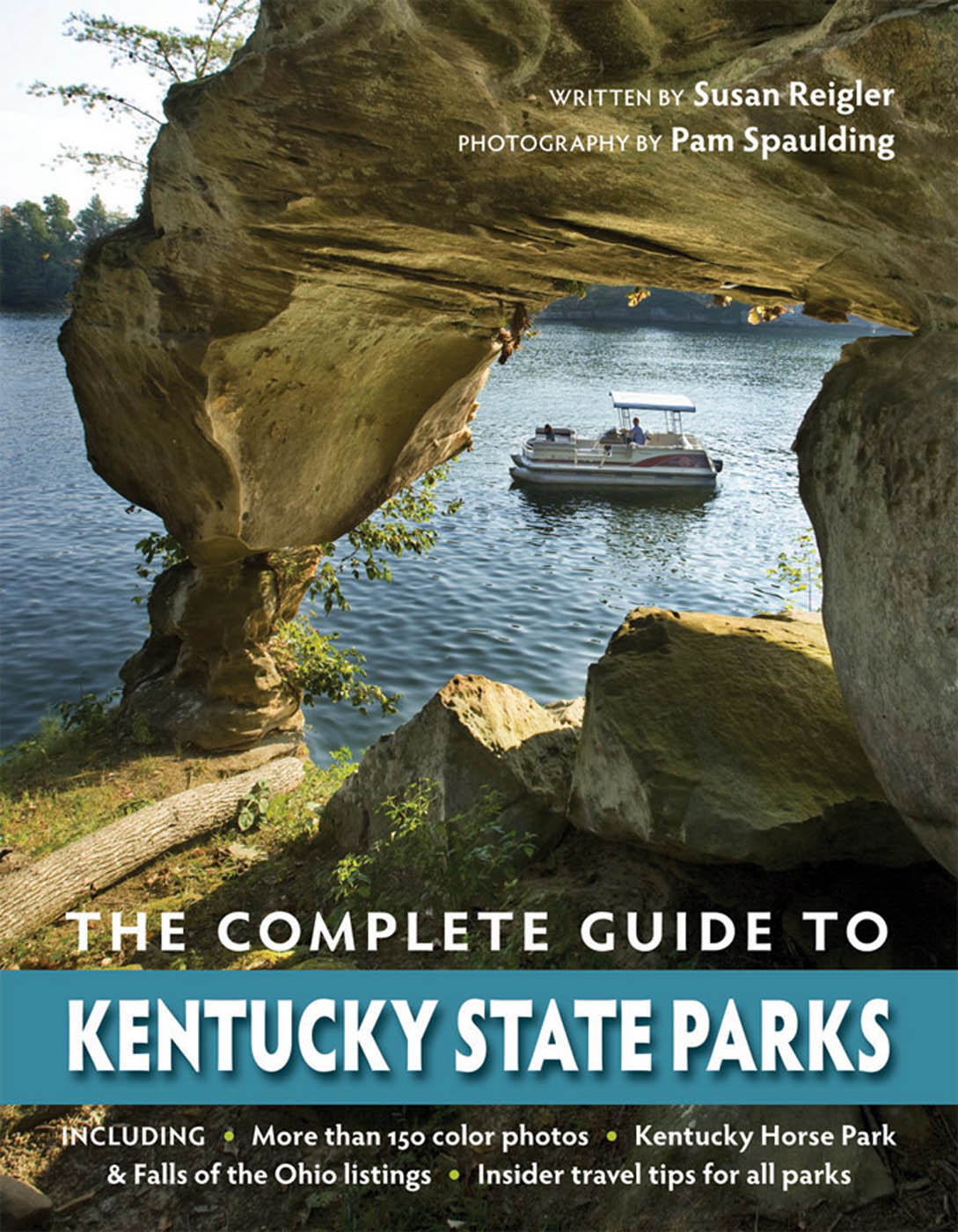THE COMPLETE GUIDE TO KENTUCKY STATE PARKS

THE COMPLETE GUIDE TO
KENTUCKY
STATE PARKS
WRITTEN BY Susan Reigler
PHOTOGRAPHY BY Pam Spaulding
The University Press of Kentucky
Copyright 2009 by The University Press of Kentucky
Scholarly publisher for the Commonwealth,
serving Bellarmine University, Berea College, Centre
College of Kentucky, Eastern Kentucky University,
The Filson Historical Society, Georgetown College,
Kentucky Historical Society, Kentucky State University,
Morehead State University, Murray State University,
Northern Kentucky University, Transylvania University,
University of Kentucky, University of Louisville,
and Western Kentucky University.
All rights reserved.
Editorial and Sales Offices: The University Press of Kentucky
663 South Limestone Street, Lexington, Kentucky 40508-4008
www.kentuckypress.com
13 12 11 10 09 5 4 3 2 1
Library of Congress Cataloging-in-Publication Data
Reigler, Susan.
The complete guide to Kentucky state parks /
written by Susan Reigler; photography by Pam Spaulding.
p. cm.
Includes index.
ISBN 978-0-8131-9208-6 (pbk.: alk. paper)
1. ParksKentuckyGuidebooks. 2. KentuckyGuidebooks.
I. Spaulding, Pam. II. Title.
F449.3.R45 2009
917.69'0444dc22 | 2008037331 |

| This book is printed on acid-free paper meeting the requirements of the American National Standard for Permanence in Paper for Printed Library Materials. |
Manufactured in China.

| Member of the Association of American University Presses |
Frontispiece: Clinchfield Overlook at Breaks State Park.
Design: Julie Allred, BW&A Books, Inc., Durham, NC
To Joanna, Gervase, and Winston,
devotees of the license plate game
CONTENTS
INTRODUCTION
Buckskin-clad long hunters (one who hunts for weeks or months at a time), dense woodlands that shelter bears, roaming herds of elk and bison, and wetlands where bald eagles perch in overhanging branches are all sights that would have been familiar to Kentuckys most famous early citizen, Daniel Boone.
Were Boone to return to the state today, he would find all these sights preserved and protected in Kentuckys state parks. Even his eponymous settlement, Fort Boonesborough, is still around, though rebuilt and moved a bit from its original site. And he might be tempted to take up golf or sailing, have a swim in an Olympic-size pool, or spend a warm summer evening outdoors enjoying a musical or a concert. The parks offer all these things, too.
Thanks to the foresight of Kentuckys citizens in the early part of the last century, the states General Assembly created the State Parks Commission in 1924 and so began the preservation of unique scenic areas and important historic sites. It started with 4 parks. Today there are 52 if you include Pine Mountain Trail State Park, a 120-mile backcountry hiking trail under development, or 53 if you count the interstate park shared with Virginia. Together they constitute what has to be the best public backyard in the country.
They encompass almost 50,000 acres and include or are situated on the shores of almost 350,000 acres of lakes. They provide a combination of natural and historic preservation and recreation, from tiny Isaac Shelby Cemetery State Historic Site near Danville (only 0.25 acre, the resting place of the states first governor) to Breaks Interstate Park (4,600 acres of rugged, forested mountain terrain covering parts of both Kentucky and Virginia through which the Russell Fork River has carved a five-mile-long, 1,600-foot-deep canyon). Hikers and backpackers will find 250 miles of trails to explore. Included in the system are many wonderful indoor assets, too, from graceful antebellum mansions to log meetinghouses. Kentucky classifies its parks in three categories.
Resort parks, of which there are 17 (more than in any other state), have lodges with dining rooms and cottages to accommodate visitors who go to them to enjoy their natural settings. Many of these parks, including Cumberland Falls State Resort Park and Pennyrile Forest State Resort Park, contain architecturally and historically significant buildings, such as lodges and cottages constructed in the 1930s by the Works Progress Administration and Civilian Conservation Corps.
The 24 recreational parks do not have lodges, though many have campsites and one has cottages. They offer facilities for hiking, birding, fishing, boating, golf, and other outdoor activities. Like many resort parks, several recreational parks are on land associated with historic events, such as Fort Boonesborough State Park and My Old Kentucky Home State Park.
Historic sites (11 in all) commemorate events that occurred over many centuries, from Wickcliffe Mounds State Historic Site, where Mississippian mound builders lived from about 1100 to 1350, to Perryville Battlefield State Historic Site, where the states largest Civil War battle took place in 1862. Colorful figures from Kentuckys past include John James Audubon, Abraham Lincoln, Jenny Wiley, and Stephen Foster, and each, like Daniel Boone, has parks associated with his or her time in the state.
The parks are extremely popular. According to the Kentucky Department of Parks, some 7 million visitors per year, including nature lovers, history buffs, sports enthusiasts, and people simply looking for an affordable weekend getaway, visit the properties in the system.
This book was written to help you explore the parks, including the many in which you can literally follow in Daniel Boones footsteps. What I have tried to do in these pages is give you an armchair traveler description of what being in each park is like. Some entries describe specific events, while others give more general descriptions. Pam Spauldings beautiful photos give you a sense of each place, too. Perhaps it should be mentioned that all efforts, whether oral or written, were made to ensure the human subjects in the photographs were aware that their likeness would be included in this book. Anyone believing he or she was not asked may contact the publisher.
The sections of the book are arranged geographically, using the regions designated by the Kentucky Department of Parksnorth central, south central, eastern, and western. Within each region, the parks are listed alphabetically.
Also included in each parks listing is a description of facilities. I have not noted specific fees or hours because these are subject to change. Park phone numbers and Web sites are included so you can check on the most recent details. Some attractions within parks charge admission, but unlike in many other states, you can drive or walk around the grounds of any Kentucky state park free of charge. Since the meals I had in lodge restaurants were of decidedly mixed quality, and nothing is more changeable than a restaurant kitchen, I have not attempted to critique park menus.
The home page of the Kentucky state parks is http://www.parks.ky.gov/. In addition to links to each parks page with current rates and fees, this site has information about special system-wide deals, including golf packages and adventure and history trails. From this site, you can order maps and purchase gift cards that can be used throughout the system.


